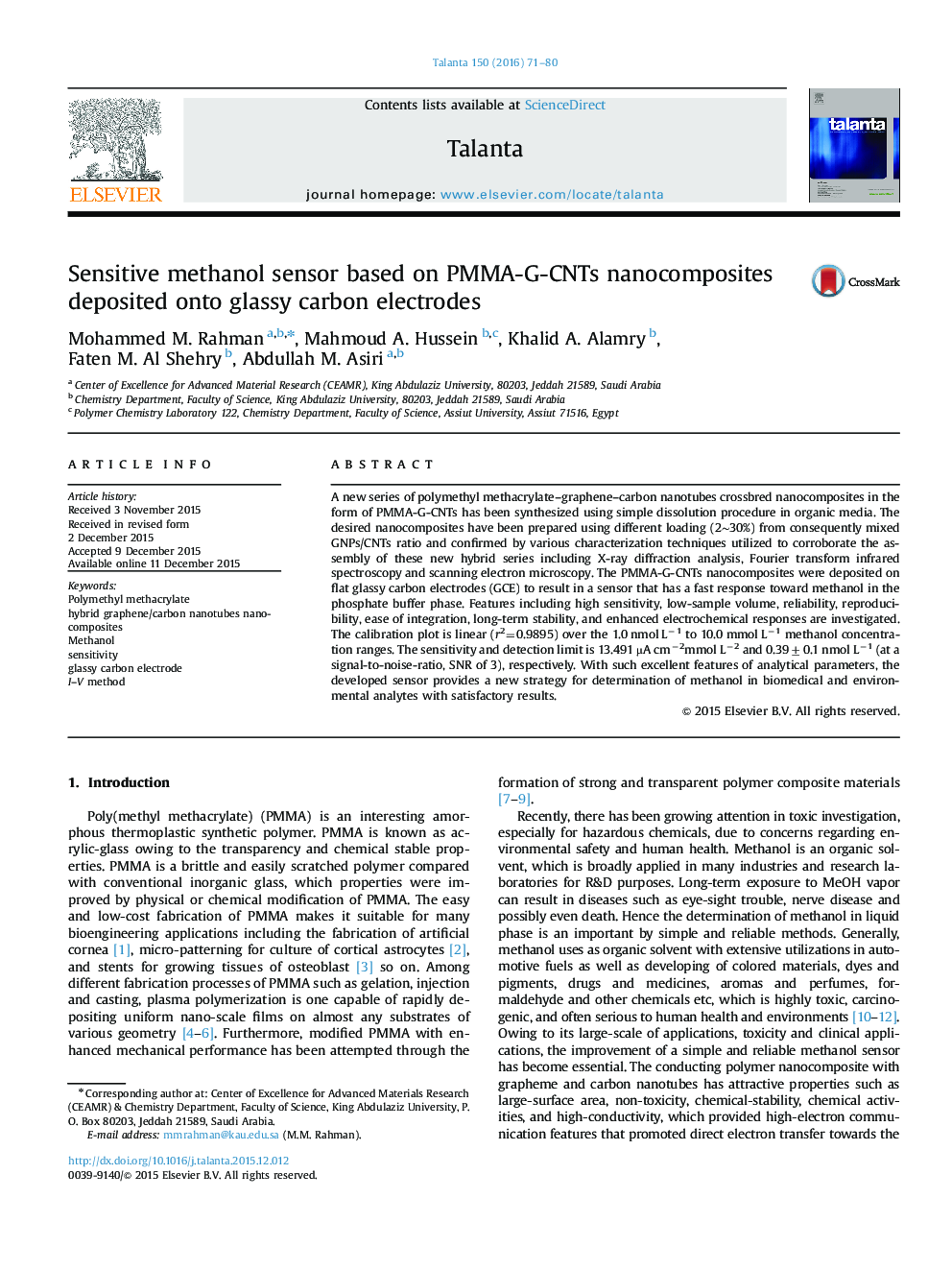| Article ID | Journal | Published Year | Pages | File Type |
|---|---|---|---|---|
| 1242146 | Talanta | 2016 | 10 Pages |
•PMMA-G-CNTs nanocomposites were synthesized by dissolution procedure.•Methanol sensor based on PMMA-G-CNTs/GCE was developed by I–V technique.•It was displayed the highest sensitivity and lowest detection limit ever published in the literature.
A new series of polymethyl methacrylate–graphene–carbon nanotubes crossbred nanocomposites in the form of PMMA-G-CNTs has been synthesized using simple dissolution procedure in organic media. The desired nanocomposites have been prepared using different loading (2∼30%) from consequently mixed GNPs/CNTs ratio and confirmed by various characterization techniques utilized to corroborate the assembly of these new hybrid series including X-ray diffraction analysis, Fourier transform infrared spectroscopy and scanning electron microscopy. The PMMA-G-CNTs nanocomposites were deposited on flat glassy carbon electrodes (GCE) to result in a sensor that has a fast response toward methanol in the phosphate buffer phase. Features including high sensitivity, low-sample volume, reliability, reproducibility, ease of integration, long-term stability, and enhanced electrochemical responses are investigated. The calibration plot is linear (r2=0.9895) over the 1.0 nmol L−1 to 10.0 mmol L−1 methanol concentration ranges. The sensitivity and detection limit is 13.491 µA cm−2mmol L−2 and 0.39±0.1 nmol L−1 (at a signal-to-noise-ratio, SNR of 3), respectively. With such excellent features of analytical parameters, the developed sensor provides a new strategy for determination of methanol in biomedical and environmental analytes with satisfactory results.
Graphical abstractFigure optionsDownload full-size imageDownload as PowerPoint slide
